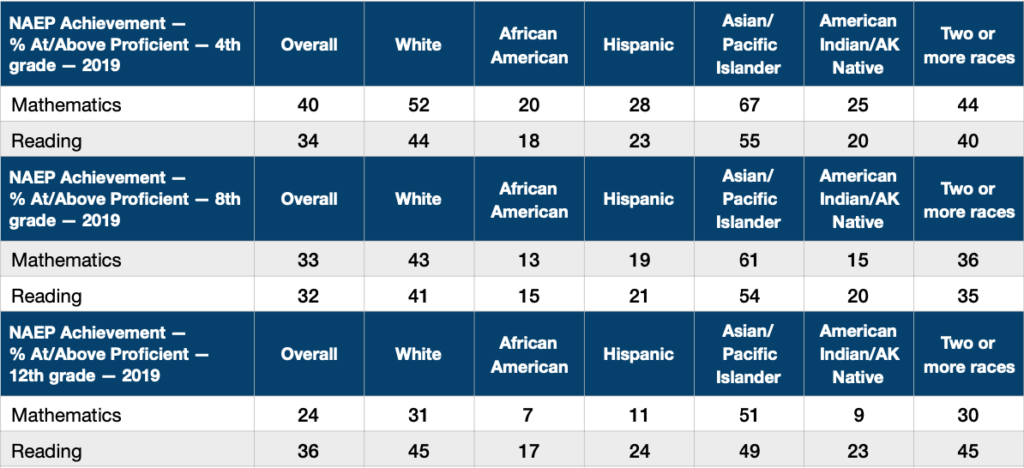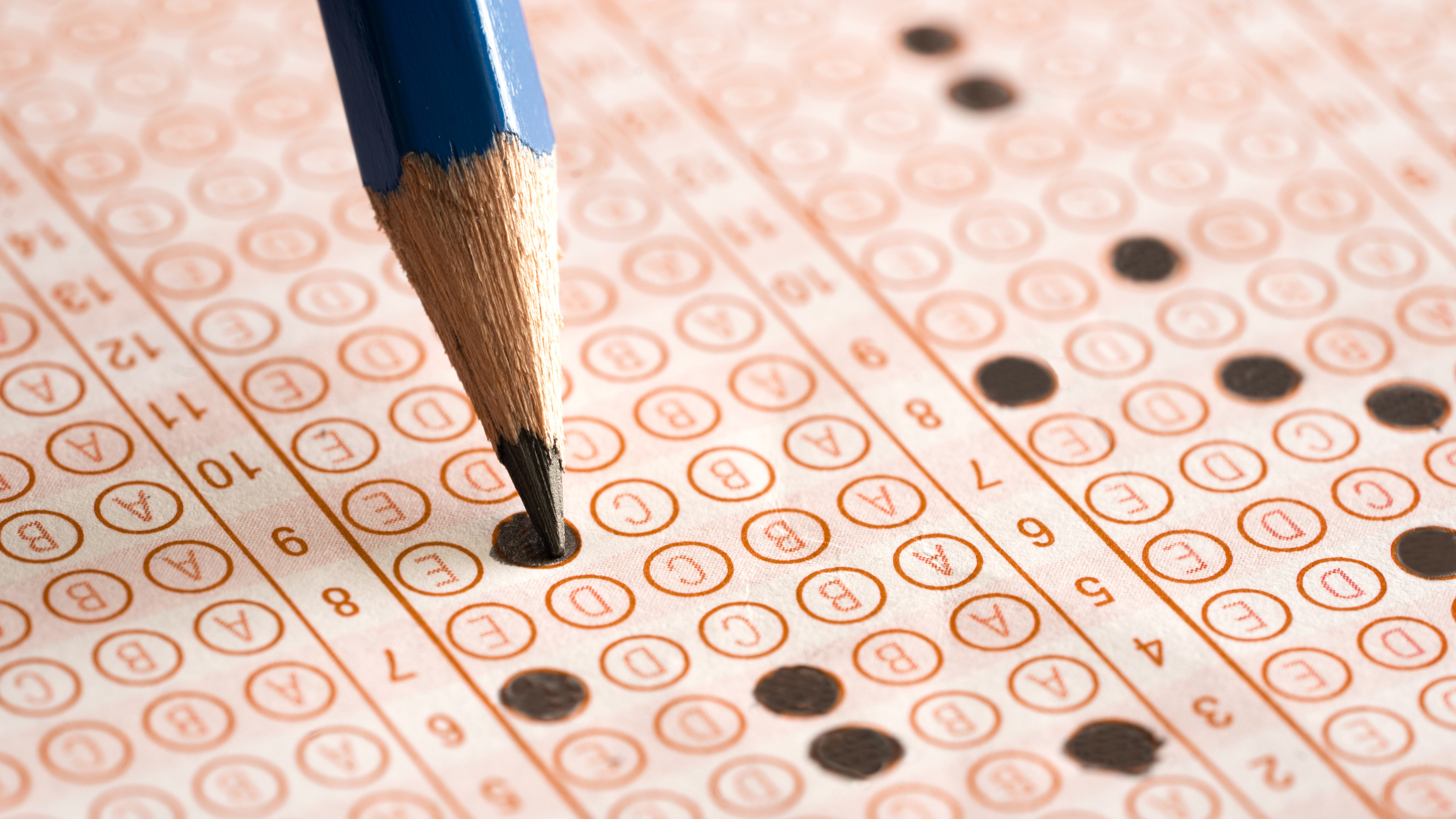In the flurry of headlines that were coming out right before the election, one that might have been missed was the release of the new math and reading achievement data for 12th grade on the National Assessment of Educational Progress (NAEP). Specifically, this week we will analyze the data by looking at the shares of students considered at or above proficient.
Overall, 24% of 12th graders in public schools are considered at or above proficient in mathematics on NAEP, and 36% were considered proficient in reading. This has changed little over the last ten years. In 2009, 25% of 12th graders were considered at/above proficient in math, and 37% in reading. Analyzing the data by race shows more pronounced variation. For example, only 7%, of African American 12th graders were considered at or above proficient in math on the 2019 NAEP, with 11% proficient in reading. Among Hispanics, this share was 11% in math and 24% in reading.
A look at the data across different grade levels for 2019 also shows that, in general, the shares reaching at or above proficient in math tended to decline as the student cohort aged. In reading, shares at or above proficient tended to remain about the same from 4th to 8th to 12th grade.

Despite some variation by race, the near-universal low shares achieving at or above proficient across the board in 12th grade is noteworthy. That the shares achieving proficiency in math tend to drop as the student cohorts aged — and had spent more time in the school system — is equally noteworthy. It is the 12th graders, those getting ready to enter college or the workforce, who have the lowest shares achieving math proficiency and stagnant shares achieving reading proficiency, suggesting that large shares of students may not be graduating with the skills they need to succeed in college or the workplace. The conditions created the pandemic, and the anticipated learning losses only serve to deepen these worries.







